Quarter Season Takeaways from the Miami Heat’s Start
Nineteen games into the season, with Chicago next, the Heat have shown they are a good team and now there is enough of a sample size to begin to draw some key takeaways on what they’ve shown thus far. The Heat are currently sitting at 12-7 while holding the 2nd seed in the Eastern Conference, boasting the leagues #4 Net Rating, but they have hit a rut lately, going 5-5 in their last 10 games. What is there to be excited about? What is there to be concerned about? Why haven’t some things looked the way we expected, hopefully this article can help answer some of those questions.
Bam Adebayo: Growing pains of turning into a “Flat-out scorer?”
Before the season began, Pat Riley was quoted saying “I think you might see a flat-out scorer this year” when asked about Bam Adebayo’s development. About a quarter into the season, Heat faithful have seen a flat-out increase of .3PPG. The lack of raw statistical scoring improvements have made it tough to see why Riley would make these comments before the season.. Let’s take a look into why the man with “no ceiling” is capping out at 19 PPG.
The first question to ask is: Is Bam Adebayo taking the same kind of shots?
The short answer to this question is yes, for the most part. As shown in the charts below, there is a larger percentage of layups, which directly correlates to a higher FG% and a higher FTr (one of the most underrated components of scoring) There is also nearly double the percentage of fadeaways, which can be a valuable tool, but are objectively inefficient shots that hurt more than they help the offense. Outside of these non-drastic changes, Adebayo is still a predominantly jump shot based player on offense, which is not surprising given the fact that he is an undersized center.
The second question to ask: Is Bam Adebayo creating his own shot more?
19 games in, the answer is yes, Adebayo has seen an increase from 34% of his made field goals being unassisted in 20-21’ to 40.5% of his made field goals being unassisted in 21-22’. The increase in self-creation is a pro that has come with its cons, as Adebayo’s FG% has decreased by 5.4% or in terms of totals, he’s missing about half a shot more per game than he would have last year.
The third question to ask: Why is Bam Adebayo not scoring more per game?
As simple as it sounds, Adebayo’s in a scoring slump. In today’s NBA it’s quite strange for a “non-shooter” to be in a slump but here we are. After comparing his 20-21′ FG efficiency to this year’s, research showed that Pull-up shooting is down from 40.9% to 28.9%, Catch-and-Shoot is down from 46.5% to 36.7%, and Layups are down from 57.8% to 52.1%. Factoring volume into the equation, Adebayo is missing out on acombined 1.5 PPG by underperforming on his easily repeatable efficiencies from the year prior. The overall increase of play-finishing as opposed to play-initiating that he has had to do has led to some faulty process (short-range pull-ups, increase in fadeaways) that should be limited moving forward, but these are the growing pains to a complete shifting of role for a star in the NBA.
Perhaps this won’t resonate with most Heat fans but a 24-year-old perennial DPOY candidate with above average stationary playmaking skills and a 20 to 21 PPG skill set that does not rely solely on the creation of others, sounds like the type of player any franchise would want to build around.
Duncan Robinson and Kyle Lowry: Is the shooting gone?
Going into the season, the expectation was that Kyle Lowry and Duncan Robinson would be the premier 3-point shooters, who could combine to take a Butler and Adebayo offense to an elite level. Through 19 games, that sentiment could not be further from reality. The duo is combining to shoot 32.2% from 3 on 15.2 3 point attempts a game. This 3-point mark is good for .96 PPP, the same efficiency at which Tobias Harris scores in Isolation, yikes.
To make matters even more disheartening, their struggles are coming largely on the easier type of 3 point shot: catch-and-shoot opportunities (C&S). Robinson is shooting 32.1% on a league-leading 7.2 C&S 3 point attempts a game, and Lowry is shooting 28.8% on 3.1 C&S 3 point attempts a game.
There are two ways to view this:
1. The Heat are doomed because now they have inefficient, high-volume shooting around two non-shooting stars and that will lead to an offensive implosion come playoff time.
OR
2. Math will do what math does and see Robinson and Lowry revert to their previous good-to-great 3 point shooting averages, catapulting the Heat’s 6th ranked offense into the top 3, cementing the Heat as one of few elite teams in the league.
Loading...
Tyler Herro: The Premier Shot Maker?
Tyler Herro’s breakout is without question the most important development of the Heat’s first quarter of the season. The leap to being a play-finishing jump shooter is one of the toughest leaps to make in the NBA, it is one that now all-star caliber players such as Bradley Beal, Devin Booker, Jaylen Brown, CJ McCollum and Zach Lavine have all made over the last few years. While it might be an overreaction to put Herro in this category after 18 games played, it is completely reasonable to place him on this kind of trajectory.
At 21 years old, Herro is currently averaging 21.8 PPG on 45/40/87 splits. While the raw statistics are great, the crux of Herro’s “leap” is the ability to create and make his shots at an incredibly high clip. Herro has progressively increased his % of unassisted shots each year of his career, starting at 39.3% in 19-20’, 44.6% in 20-21’ and now 59.6% in 21-22’.
Herro won’t dazzle by breaking a defender down off the dribble in isolation situations (6th percentile in Isolation) but he doesn’t particularly need to as he’s capable of rising up over a tough shot contest and getting to his spots without any wasted movement. The hardest shot to defend in all of basketball, the Pull-Up jumper, is one shot that the premier “scorers” in the league have in common.
Of the 13 players who take 9 or more Pull-Up jumpers a game, Tyler Herro has the 4th highest effective FG%, which weighs 3-point shots as 1.5 times more valuable than 2-point shots. Below is a bar chart to contextualize Herro’s leap as a pull-up shooter, and the players this puts him “in the conversation” with:
While Pull-Up shooting isn’t the only thing that Herro has going for him this season, this development of a reliable “tough shot maker” in the half court will go a long way towards the Heat hitting their ceiling as a team. The primary shot creator was a large question mark following the round one sweep against the Milwaukee Bucks, with Herro playing at this level, that question mark is slowly turning into one of the strengths of this Heat team.
Rebounding: Looks like an issue but is actually a strength?
Defensive possessions aren’t finished until the defense gets the rebound. An offensive possession isn’t finished until the defense gets the rebound. On paper, the Heat should be a very poor rebounding team, they often run lineups with Bam Adebayo (6’9) as their tallest player and starting lineup with an average height of 6’5.5. Despite the size disadvantage, the Heat have all the numbers of an elite rebounding team. The Heat are currently tied for 1st with the Utah Jazz at 53.1% total REB%, are 2nd in DREB% at 75.4% and are 6th in OREB% at 29.5%. A sizable upgrade from the Heat’s 22nd ranked rebounding last season. While some of the Heat’s flaws may come to light as the season goes on, finding a strength in such a consistent aspect of the game will help raise the floor of this team on a game-to-game basis.
The formula for the Heat should be to win the rebounding battle every night, and if the beginning of the season is any indicator, that formula correlates directly to winning. The Heat are 12-2 in games where they win the rebounding battle, with both losses being decided by 3 points.
While rebounds aren’t the first thing most point to on the box score after a win or a loss, it’s a way for the Heat to win around the margins, which is crucial for a team that is not as physically or offensively gifted as most others around the league.
Rim Pressure: Where does it come from?
The Miami Heat have turned into a jump shooting team this season, primarily due to the personnel on the roster. Jimmy Butler (13.3 Drives/G) is one of the NBA’s best at getting to the rim, Tyler Herro (10.4 Drives/G) is finding some downhill juice primarily from attacking switches on to Bigs and by playing with pace in pick and roll, outside of that, it’s anybody’s guess as to who on the Heat will be getting themselves to the rim. The easy finger to point is at Kyle Lowry, who started the season being virtually allergic to the rim, but has ramped up his rim pressure recently and become the Heat’s 3rd cog in the rim pressure attack at 7.9 drives/G over the last 8 games. Even with this incremental improvement, the Heat rank 29th in drives (36.1) and 28th in Restricted Area attempts (21.4) on the season.
While rim pressure isn’t the end-all be-all for this offense, having an added layer to the offense could make the offense harder to guard, forcing more rotations and likely resulting in either an open shot, a higher percentage attempt or free throws.
As shown in the graph above, there is less emphasis on rim pressure when the Heat lose games. Some of this is due to opposing switching schemes and the Heat not really having anyone who provides an advantage against a team with multiple strong, rangy, athletic, and switchable defenders (ala Boston Celtics); however, the majority of this is simply the Heat taking their foot off the gas pedal and deciding to turn a game into a shootout as opposed to the peak level of basketball they know they are capable of.
Outside of Tyler Herro and PJ Tucker, this team has been objectively bad at shooting the basketball, yet they continue to rely on shooting the ball down the stretch of games rather than imposing their will near the rim. This is both a mentality and a personnel issue which cannot be solved unless: Adebayo is able to get comfortable taking larger and slower or smaller and weaker defenders to the cup more often, or Victor Oladipo comes back and is able to provide some facsimile of his 13.5 drives a game that he gave the Houston Rockets in his 20 games with the franchise last season.
*More frequent and well-timed off-ball cuts from Herro, Lowry, Robinson, Martin and others could also be an in-house fix.
Of all the concerns that this team may have, rim pressure is the one that might be the hardest to fix. While Oladipo should be a welcome boost that all of Heat Nation is rooting for, it would not be wise to rely upon someone, who has played in 52 games since January 2019, to solve arguably the one fatal flaw with the offense.
Everything Tradeshows is a one-stop-shop for trade show exhibit rentals and custom exhibit display purchase solutions to companies of all sizes.
Visit them at EverythingTradeShows or call 954-791-8882
****
Loading...
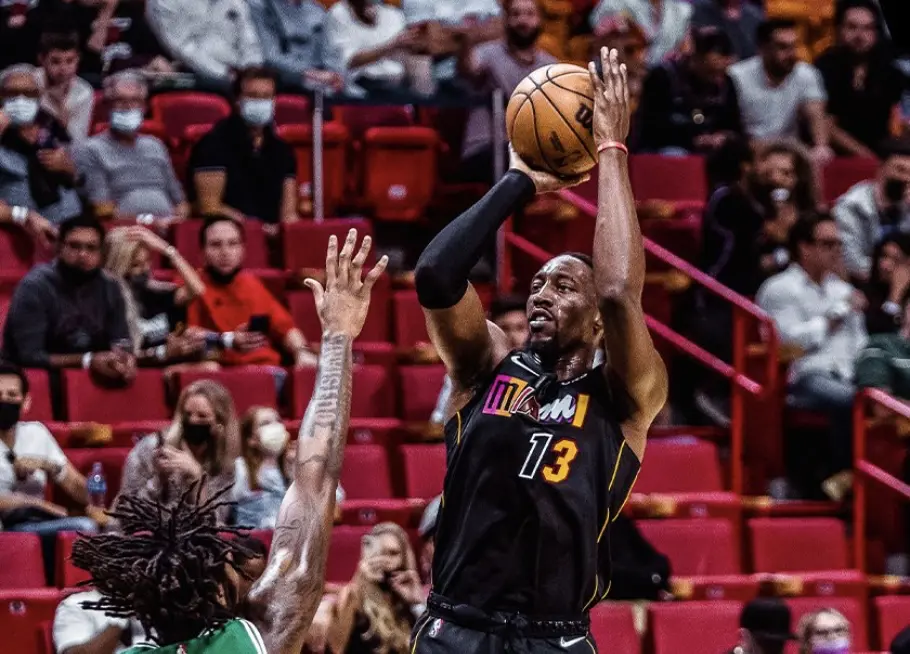
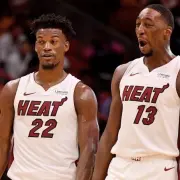
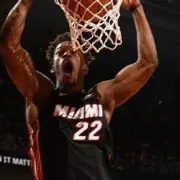
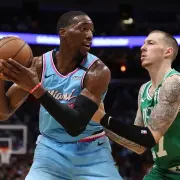
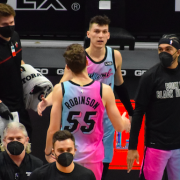
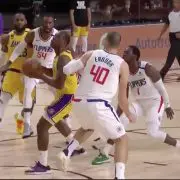
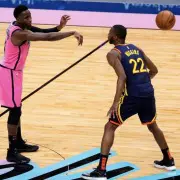


I’ve been trying to find fresh BGMI names for my new account, and this post couldn’t have come at a better time. Appreciate the variety – definitely bookmarking this!